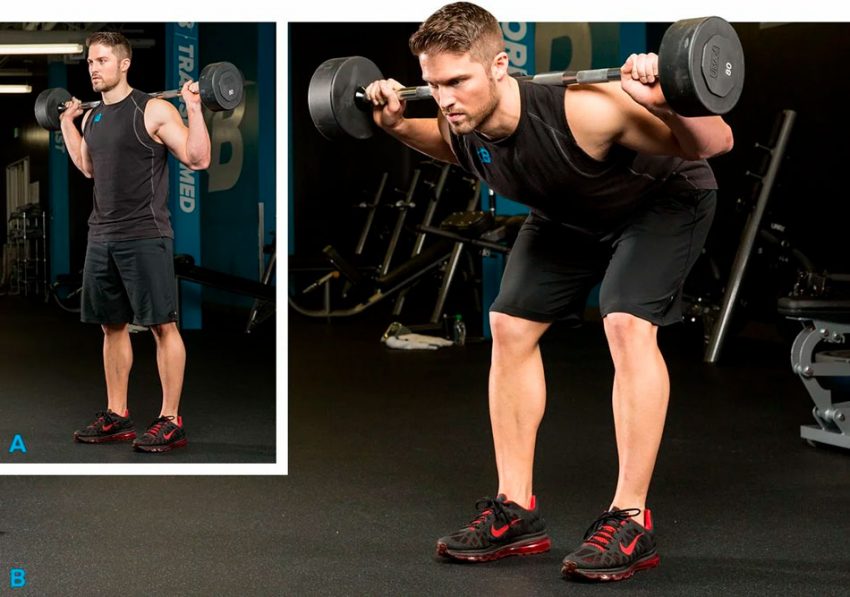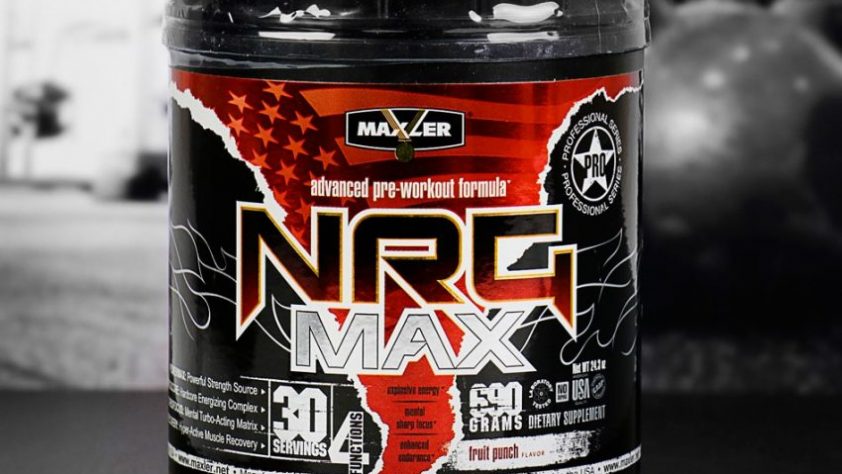The bend with a barbell on the shoulders or “goodmoning” is one of the exercises that migrated to fitness from powerlifting. The triathletes borrowed it from weightlifters. In one form or another, there are inclinations with a barbell in kettlebell lifting, bodybuilding, and even in strongman. Where they are not, it is in modern halls. If you start doing good morning, the coach on duty will most likely come up and tell you how dangerous and traumatic it is. But in reality it is not so. The back bend develops not only the long back muscles, but also the hamstrings and glutes. When performed correctly, the slope is no more dangerous than the Romanian deadlift, beloved by everyone in fitness.
In powerlifting, barbell bends are done as an auxiliary movement to the deadlift. The exercise strengthens the long back muscles and teaches the stabilization of the projectile. The development of hamstrings and glutes in this sport is considered more of a side effect. Due to the fact that inclinations can be performed with a wide variety of weights, they can be useful for a variety of needs.
What muscles work
Main engines:
- The entire array of gluteal muscles . In the exercise, the gluteus medius, small and large muscles work, but they are used to varying degrees;
- Hip biceps – involved in hip extension;
- Long back muscles – stabilize the body during extension, but are the main ones, since they begin to move during extension, and are involved in the work throughout the exercise.
How stabilizers are also involved:
- abs, arm muscles and lats, as well as rhomboid muscles of the back.
- partly to maintain the vertical position of the body, the muscles of the front of the thighs are also involved in the work.
The calves may or may not participate in the exercise as stabilizers. It depends on the position of the body and the depth of the incline. The width of the stance during exercise affects the degree of gluteal involvement. The more the stance resembles “sumo”, the more the exercise works to develop the glutes. If an athlete rises on toes, unbending the body, he develops the calf too. The strong gathering of the back brings the emphasis to the diamond-shaped, and the low barbell to the lower back.
Advantages and Disadvantages of Exercise

Each movement has its own pros and cons. Doing good morning with a barbell may not be the best option for those with spinal problems, but in terms of the physical development of healthy people, exercise can bring quite a lot of benefits.
Benefits
- Working out the muscles of the posterior chain in a sufficiently natural amplitude for them, but without a grip load. This is valuable for those who want to lift a lot and perform consistent deadlifts, bent-over rows, and other back and hamstring exercises. Over time, movements with a projectile in their hands can become a problem if the athlete is unable to hold the barbell without pain;
- Movement helps to improve posture, as it helps to master the skill of bringing the shoulder blades to the spine and back;
- Will help develop strength in the deadlift and squat by strengthening and developing the muscles of the back chain;
- Contributes to the prevention of knee and lower back injuries if performed in the correct amplitude with non-ambitious weights;
- Develops the buttocks, strengthens and tightens them. Helps add training volume to work on these muscles, diversify training for those who are tired of classic squats and deadlifts;
- Can be a rehabilitation exercise after hamstring injuries if performed in partial amplitude and with minimal weight;
- Eliminates stagnation of blood in the pelvic organs. Prevention of gynecological and andrological disorders;
- Not a difficult coordination exercise, accessible to most athletes

Disadvantages
- They require a good range of motion in the hip joint. They cannot become the basis of the training process if the amplitude is extremely reduced. Requires stretching, cannot be performed with the so-called short hamstring;
- The movement is quite traumatic for those athletes who cannot hold the barbell rigidly on their back, and systematically exceed the weight;
- The exercise requires careful planning. If you use it as a “finishing move” you can get injured simply by overworking the rear chain. A more rational approach is to plan the deadlift and the movement as interchangeable exercises, doing the lean with a barbell instead of the medium-heavy deadlift, rather than as a stand-alone heavy exercise. The movement is performed with a maximum of half and 1 rep maximum in the classic deadlift.
Execution technique

First of all, you need to master the work in the safety frame. Set the stops in such a way that in the lower tilt position with the barbell you can freely lower it onto the belay and get out from under the projectile. This will make the execution process safe. At the same time, you do not need to set the stops too high so as not to hit the barbell against them every time. If there is no such frame in the gym, place weightlifting skirtings of the required height on the sides, so that you can lower the barbell on them by simply placing the pancakes.
Stand up straight and set the bar high for the low bar squat. In this exercise, you do not need to lay the bar on top of the trapezoid, it is enough to lower it lower and “pass” the attachment point of the trapezius muscles.
The bar is on the back, not on the shoulders:
- The bar is removed like a squat. You need to come up, position yourself in the middle of the body under the bar, bend your knees, and then straighten them, moving away from the racks;
- The shoulder blades should be brought together and stabilized, the shoulders should be laid back and lowered;
- Feet can be placed as in a squat or slightly wider;
- The socks are directed to the sides, so that when tilting, the position of the body remains stable;
- On inhalation, the pelvis is retracted, tilt forward is performed;
- Then – return the body to the neutral position, check the blades, tilt again;
- The amplitude in this exercise is individual. Those who cannot afford deep stretching should bend no more than 2/3 of their range of motion;
- The installation of the rod on the racks is carried out in the reverse order. First, you need to carefully step back, place the bar over the safety stops, and then bend your knees and lower the bar onto the racks.
Note: Where did the name of the exercise come from? Some people believe that it is a tribute to the practice of Surya Namaskar, where there is a forward lean. But in fact, the name goes back to the traditions of the Westside school. The exercise was recommended for athletes before starting any morning workout. By the way, anyone interested in the “huge weights of Westside” strong people were limited to an empty bar. The exercise was done in 1 approach “before burning”, after which the morning workout could be carried out as usual.



